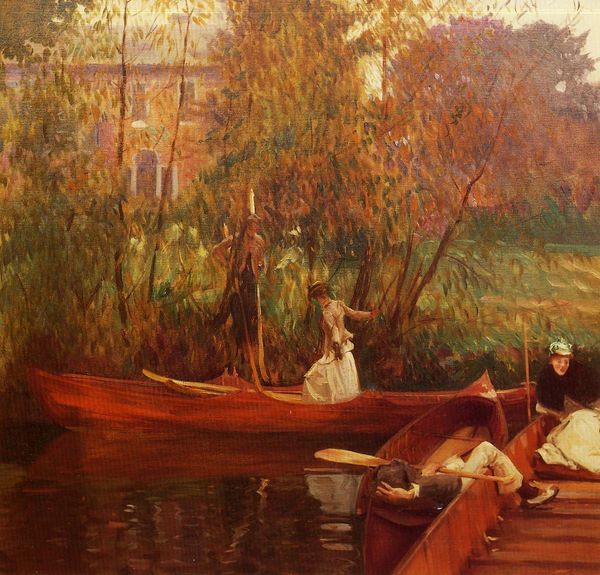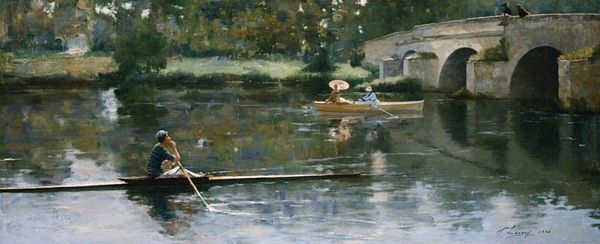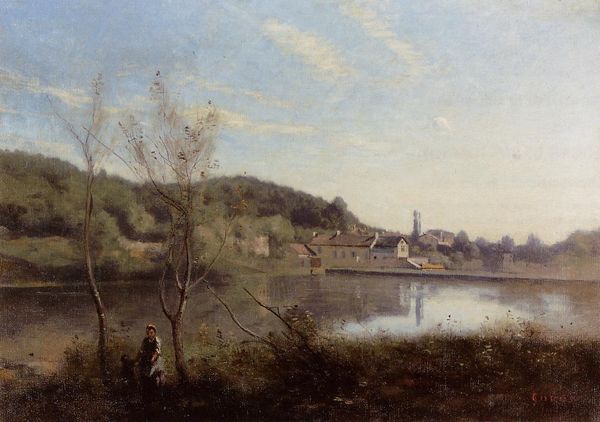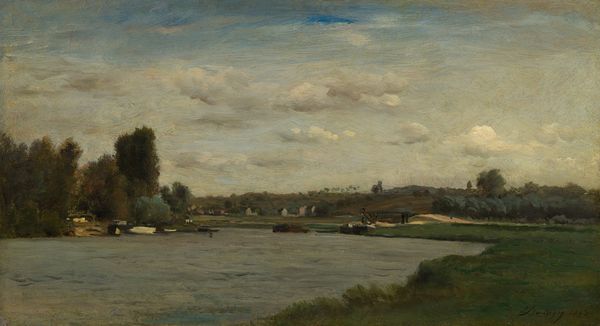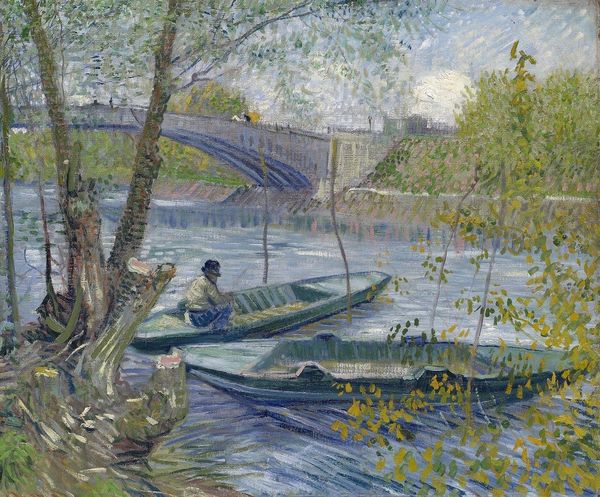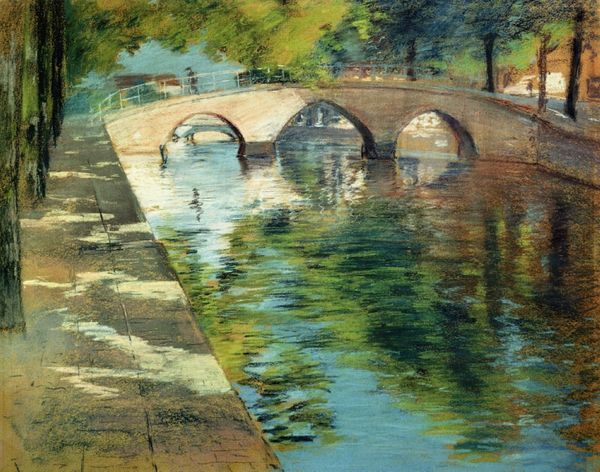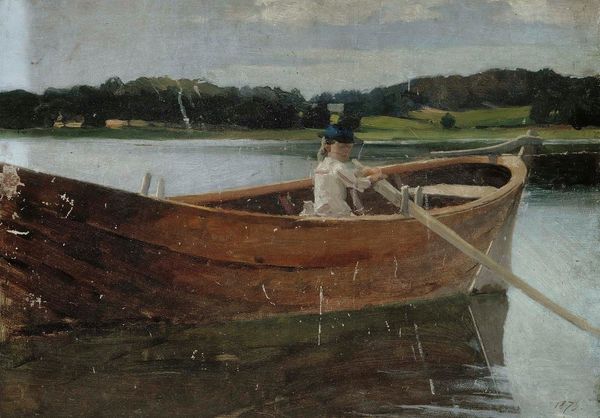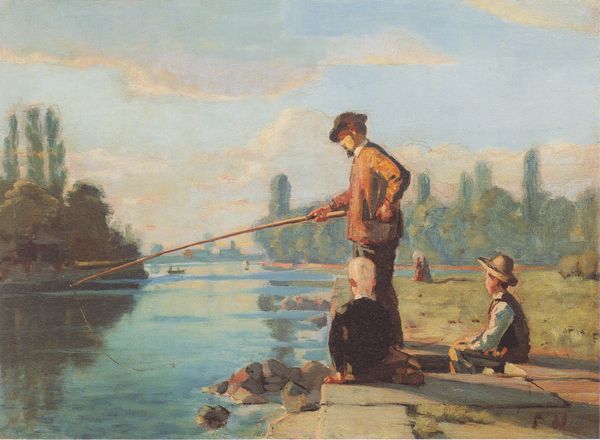
oil-paint
#
portrait
#
oil-paint
#
landscape
#
oil painting
#
academic-art
#
realism
Copyright: Public Domain: Artvee
Thomas Eakins painted "The Champion Single Sculls" at a time when the United States was undergoing rapid industrialization and urbanization, as well as grappling with issues of race and class. The painting portrays John Biglin, a working-class Irish-American rower, a figure of strength and determination, qualities valued in the expanding nation. Biglin's occupation as a manual labourer is critical to understanding his identity as an athlete and the composition of the painting. Eakins seems to place Biglin in the position of the ‘New American Hero’, as Biglin’s body becomes a testament to the virtues of hard work and physical prowess. Rowing itself, as depicted by Eakins, was a sport deeply intertwined with social status and masculinity. By choosing to portray Biglin, Eakins perhaps challenges traditional representations of athleticism. The artist creates space for alternative narratives of masculinity and class identity to emerge. Ultimately, this work offers a glimpse into the complex interplay of identity, class, and representation in 19th-century America.
Comments
artera over 1 year ago
⋮
Thomas Eakins (1844-1916) was one of the greatest American artists of the nineteenth century, instilling a powerful and sometimes shocking sense of realism into his paintings. He spent most of his life in his native city of Philadelphia, though this picture dates from the start of his career, when he had just returned from four years studying in Europe (1866 to 1870), mostly in France and Spain. It was hardly surprising after such time away that he was anxious to turn his attention to the places and the activities that he had missed while abroad. Above all, he was drawn to the idea of rowing scenes, producing several paintings on this theme between 1870 and 1874. This is probably the most famous of them. It shows a boyhood friend, Max Schmit (1843-1900), turning around to face the viewer. Although a lawyer by profession, Schmitt was a keen amateur oarsman and had recently won a prestigious, single-scull race. In his usual, fastidious way, Eakins arranged the entire composition so that it included a number of references to this victory. The autumnal setting was chosen to tally with the date of the race (October 5, 1870); the late-afternoon sky indicated the time that it took place (5 p.m.); and Schmitt's scull was even located on the precise spot where the finishing line had been situated. As he was equally fond of rowing, Eakins decided to add his own portrait to the picture, in the guise of the rower in the middle distance. To make things doubly clear, he painted his signature and the picture's date on the side of the boat.
Join the conversation
Join millions of artists and users on Artera today and experience the ultimate creative platform.




